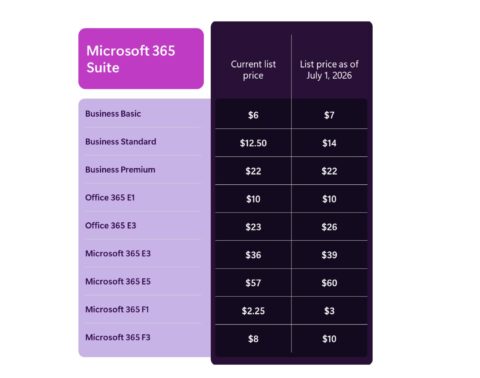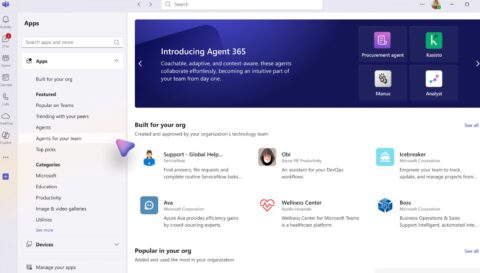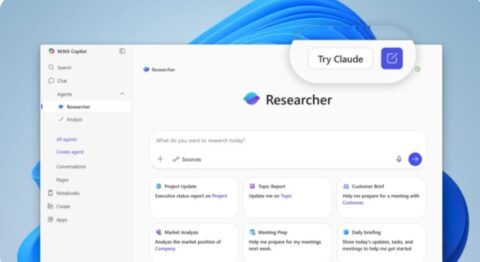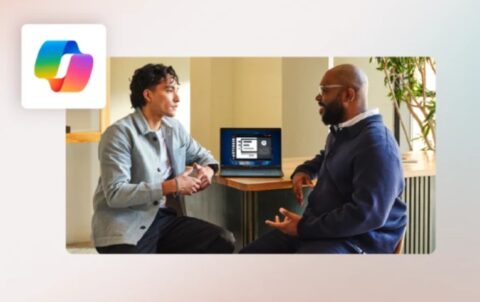Updated: April 8, 2024 (March 14, 2024)
BlogDynamics 365 rights in Power Apps Subscriptions: Changes on the horizon?

New licensing text, which I found through a link in the March 2024 Dynamics 365 Licensing Guide, seem to limit when users of Power Apps applications may be covered with lower-cost Power Apps subscriptions, rather than more-expensive Dynamics 365 subscriptions. If real, this is a significant change that will make it more expensive to use Power Apps applications that work with Dynamics 365 CRM and ERP applications, and it could severely increase budgets for customers how have already written and deployed Power Apps applications that work with Dynamics 365 data.
I’ve contacted Microsoft about these changes. They said they are looking into it, but it’s been a couple of weeks, and we need to let our customers prepare for the impact. Over the years, I’ve occasionally found buried information like this that Microsoft has not wanted to talk about yet. That could be what I’ve discovered here. If they do reply, I’ll update this article with the new information.
Update: March 20, 2024
Microsoft responded to my blog post, stating, “We have not introduced changes or updates to our licensing requirements to Dynamics 365 or Power Apps solutions. To clarify on the new solution checker, it specifically addresses adherence to the most common Dynamics 365 Sales license requirements when building custom Power Apps applications.”
You say “clarifications.” I say “changes.”
Here’s what I think is really happening.
As Dynamics 365 and Power Apps continue to grow, customers have increased their use of Power Apps to write various custom applications. Why not? It’s a great tool and works well with Dynamics, so it’s a logical choice.
But… I think during contract renewals, Microsoft is facing difficult conversations with customers who have been licensing users with Power Apps licenses, based on the following guidance that has been in both Dynamics 365 and Power Apps Licensing Guides for years:
“Power Apps users who have a Power Apps license may use custom applications to access (that is, create, read, update or delete) any Dynamics 365 non-restricted table in the Dataverse. However, Power Apps users and devices that need to create, update, or delete data in Dynamics 365 restricted tables must be properly licensed for Dynamics 365.”
I suspect customers are being told that they need more expensive Dynamics 365 licenses for their Power Apps, because those apps are going beyond the “restricted” table guidance and performing actions and updating tables that Microsoft says require Dynamics 365 licenses. So, in response, Microsoft added new text in the March 2024 Licensing Guide to “clarify” the rules. Clarifications that have been missing for several years.
I also think Microsoft should be more direct and include text in the section that discusses Power Apps licensing. If it were up to me, and it is for our readers, I would like to offer this additional paragraph to “clarify” when customers can use and cannot use Power Apps licensing:
Additionally, there are several other conditions that limit the use of Power Apps licensing. Power Apps applications that perform specific Dynamics 365 application actions, perform CRUD operations on certain tables, or use Dynamics 365 application components may require Dynamics 365 licenses. The lists of specific actions, operations, and components are in the respective Dynamics 365 application Use-Rights tables, and some are available by using the Solution Checker. Also, in some cases a Power Apps application may update non-restricted tables that will result in the database automatically calling an operation that requires a Dynamics 365 license, even though the Power Apps application is designed to follow all the rules for Power Apps licensing.
I leave you with more takeaways:
1. Using Power Apps licensing is not as beneficial as developers thought, and I know several customers who will need to rethink their use of Power Apps and Dynamics 365.
2. The Solution Checker will hopefully be a nice tool to help customers understand compliance requirements, if it covers all the possible compliance issues and is kept up to date. However, it also feels very much like an audit tool to me.
3. Finally, I was also informed that the “restricted” table list can grow and change, to reflect changes to the application; however, those changes are a clarification of current requirements and are not licensing changes. The same can be said for anything in the application Use-Rights tables.
Honestly, I’m just glad to know I’m not losing my mind, which I hear is a common occurrence when dealing with licensing.
The rest of my original blog post from March 14, 2024
The Rules We’ve All Been Following
Power Apps is a great tool for writing custom applications to augment Dynamics 365, because it uses the same back-end platform and Dataverse environment as the Dynamics 365 CRM applications. We have numerous clients who have written custom Power Apps applications to address unique requirements. They have created specialized stock-room inventory apps, case routing apps that are driven by potential refund amounts, and even a custom front-end to the Sales application that pulls data from other internal systems.
In all these cases, the users are licensed with Power Apps subscriptions, rather than Dynamics 365 subscriptions. This is because Power Apps subscriptions provide rights for users to create/read/update/delete (CRUD) most Dynamics 365 data. The only limitation is the Power Apps application cannot modify data in “restricted” tables, reading “restricted” table data is fine. If a Power Apps application does need to modify data in “restricted” tables, then the users need a full Dynamics 365 subscription. (As an example, in Sales application the only restricted table to date has been the Goal table.)
The reason many customers use Power Apps subscriptions is they provide a mid-way licensing option between Dynamics 365 Team Member and Dynamics 365 Enterprise level subscriptions and are more flexible than Enterprise level subscriptions. (For the sake of this discussion, I am limiting the comparison to Dynamics 365 CRM applications: Sales, Customer Service, and Field Service):
- Dynamics 365 Team Member is US$8 per user per month and provides full read access to all applications and some minor updating.
- Power Apps Premium Per-User is US$20 per user per month and provides full read access to all applications and the right to modify non-restricted tables across all applications.
- Dynamics 365 CRM Enterprise licenses are US$95 per user per month and provide full read access to all applications but full write access to one application only.
Now, the question of how to license users has always comes down to understanding the list of “restricted” tables, which has been located at this Website for several years and has not been updated in almost two years.
Our customers (and others) have used these licensing rules for years to determine if using Dynamics 365 and building a custom Power Apps application makes financial sense. Think about it: if the cost analysis is based on 1,000 users with Power Apps subscriptions at US$20 per month ($240K per year), that cost is much lower than 1,000 users with Dynamics 365 Enterprise licenses at US$95 per month ($1.14M per year).
New licensing limitations?
Now, the first week of every month, I sit down with a cup of tea and read through the latest Dynamics 365 Licensing Guide, looking for the inevitable changes. It may come as a shock, but I actually enjoy this process.
But imagine my surprise (and initial delight) when I started reading the March 2024 Dynamics 365 Licensing Guide and came across new text in the footnotes on pages 27, 57, and 58. Buried in those footnotes was new help for customers to “verify license compliance” when using Power Apps applications. The footnotes even included a link to a “solution checker” that developers can run against their Power Apps solution to determine what kind of license (Power Apps or Dynamics 365) the users will need.
However, I was immediately concerned because the text mentioned “tables, operations, messages, and controls.” For years, the only licensing rule was based on when a Power Apps application modified data in “restricted” tables. So why is this solution checker talking about anything other than “restricted” tables?
It turns out that the solution checker (which currently only works on Sales data) can go through a Power Apps solution and check for the presence of restricted tables, as well as a list of operations and controls that it says require a full Dynamics 365 Sales license. It refers to these as “restricted operations” and “restricted controls”.
Now, if Microsoft goes forward with what I have seen in the solution checker, then here are the changes customers need to be ready for:
- The list of “restricted tables” goes beyond the current master list and adds several more tables that were not restricted before.
- “Restricted operations” refers to certain processes (like generating an invoice) that are run on non-restricted tables but will require a full Dynamics 365 subscription.
- “Restricted controls” refers to embedded controls (like the Sales accelerator or forecasting grid) that if used in the Power Apps solution will require users to have a full Dynamics 365 subscription.
For our customers, these are major rule changes that will impact numerous existing Power Apps deployments, as well as current plans for new applications and potentially whether they purchase Dynamics 365.
What I came away with was a feeling of disappointment. I was hoping the solution checker would be a step forward in helping customers understand what licenses they needed. Instead, it looks like Microsoft is using it as an opportunity to further limit Power Apps subscription rights and increase cost for customers who deployed Power Apps solutions in good faith.
I don’t like ending on a sour note, but I’m not sure there’s anything else I can do, except provide a few more (unhappy) thoughts:
- The solution checker is currently for the Sales application, but I suspect we’ll see it expand to cover the other Dynamics 365 CRM applications and possible the Finance & Operations data as well.
- Microsoft says (in the solution checker page) that “The list is subject to change as we add more tables, operations, and controls to the licensed usage list.” So, I suspect there will be more restrictions in the future.
Related Resources
Power Platform Licensing: Power Apps (Directions members only)















